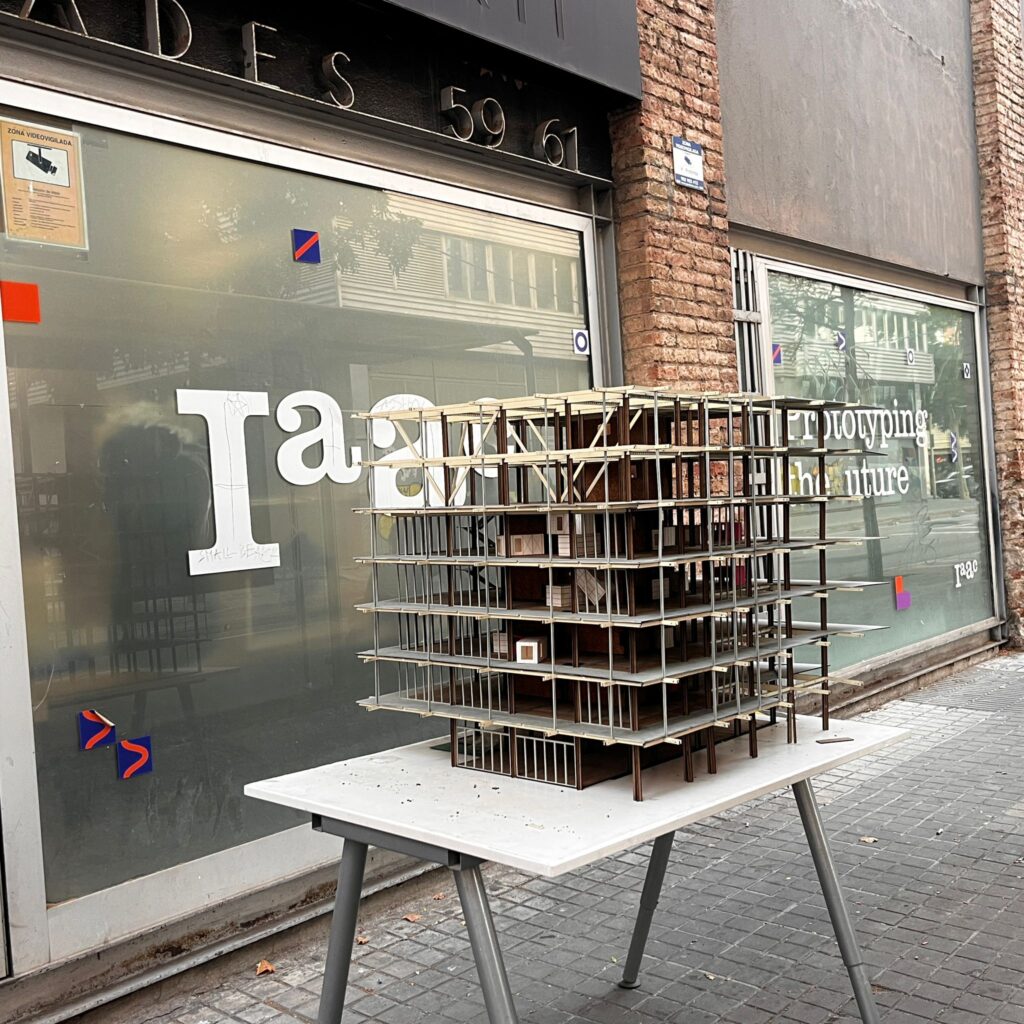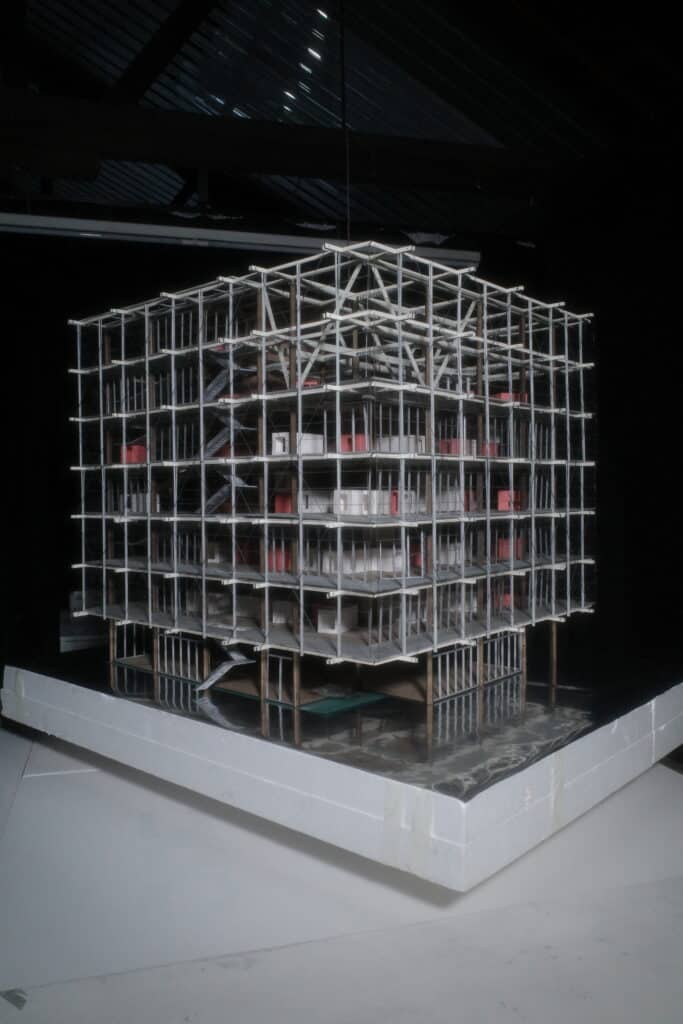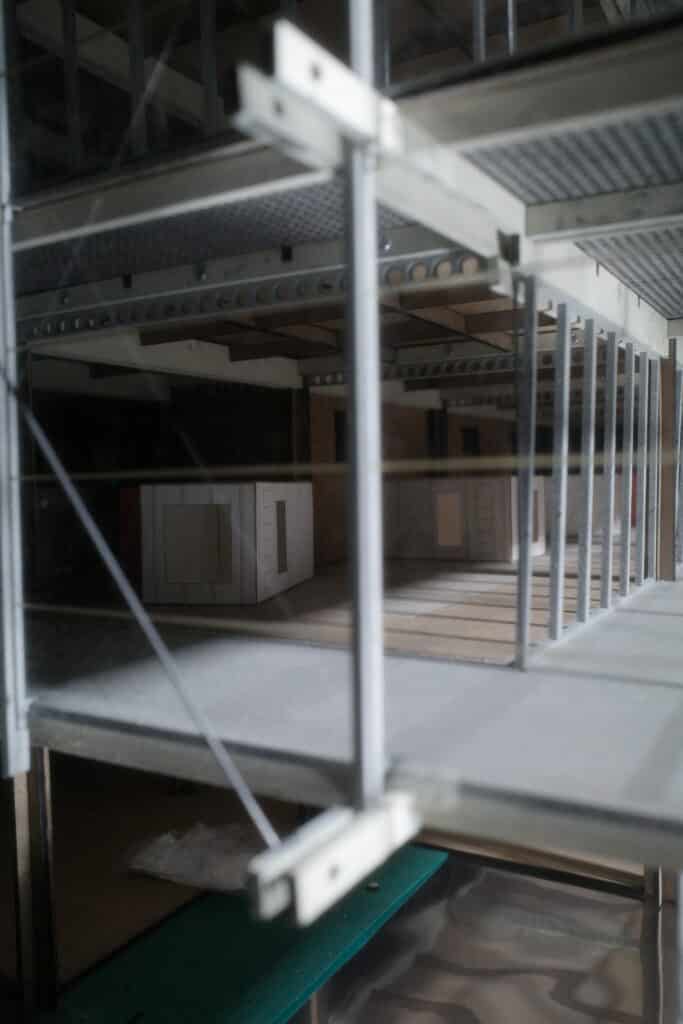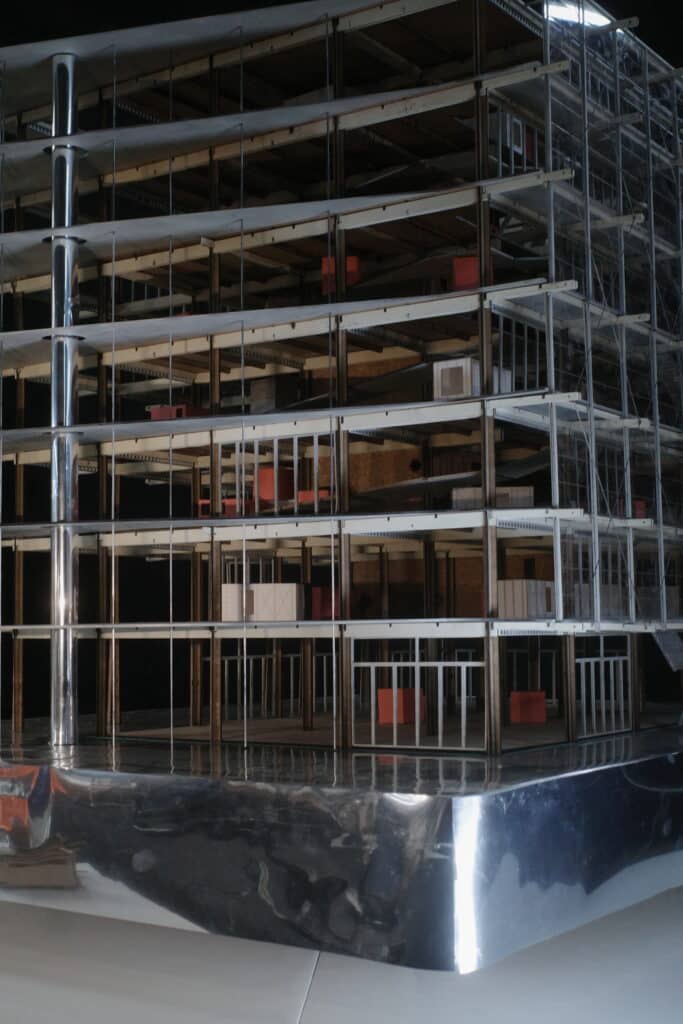TÀN 58 is a seven-story student housing project located in Poblenou, an industrial district of Barcelona. The building’s form and orientation were shaped through computational studies that optimized daylight access and solar radiation across the site. This analysis led to the introduction of two central atriums, which act as vertical heat sources and organizational cores—spaces that distribute warmth and connect all of the cork-based living units.
The building concept uses convection and heat conduction through cork as a passive system for distributing warmth. As hot air rises through the atriums, heat is absorbed and slowly transferred through the cork walls, allowing the building to regulate its internal climate without mechanical systems.

Concurrent to the design of TÀN 58, we also developed a second architectural proposal: a thesis center situated within the cork forest where our primary material is harvested. This project explored the double landscape of cork—its architectural performance and its ecological origin. We traced the material back to its source, studying where it was harvested, how it was extracted, and the seasonal rhythms that govern its collection. The investigation aimed to understand cork not only as a building component, but as part of a living system shaped by time, labor, and territory. The goal was to ground our architectural work in place-based knowledge, closing the loop between extraction and application. This culminated in a thesis research center designed to host researchers, forest workers, and evolving ideas about architecture in dialogue with landscape.
Thesis Center
plan and section of thesis center
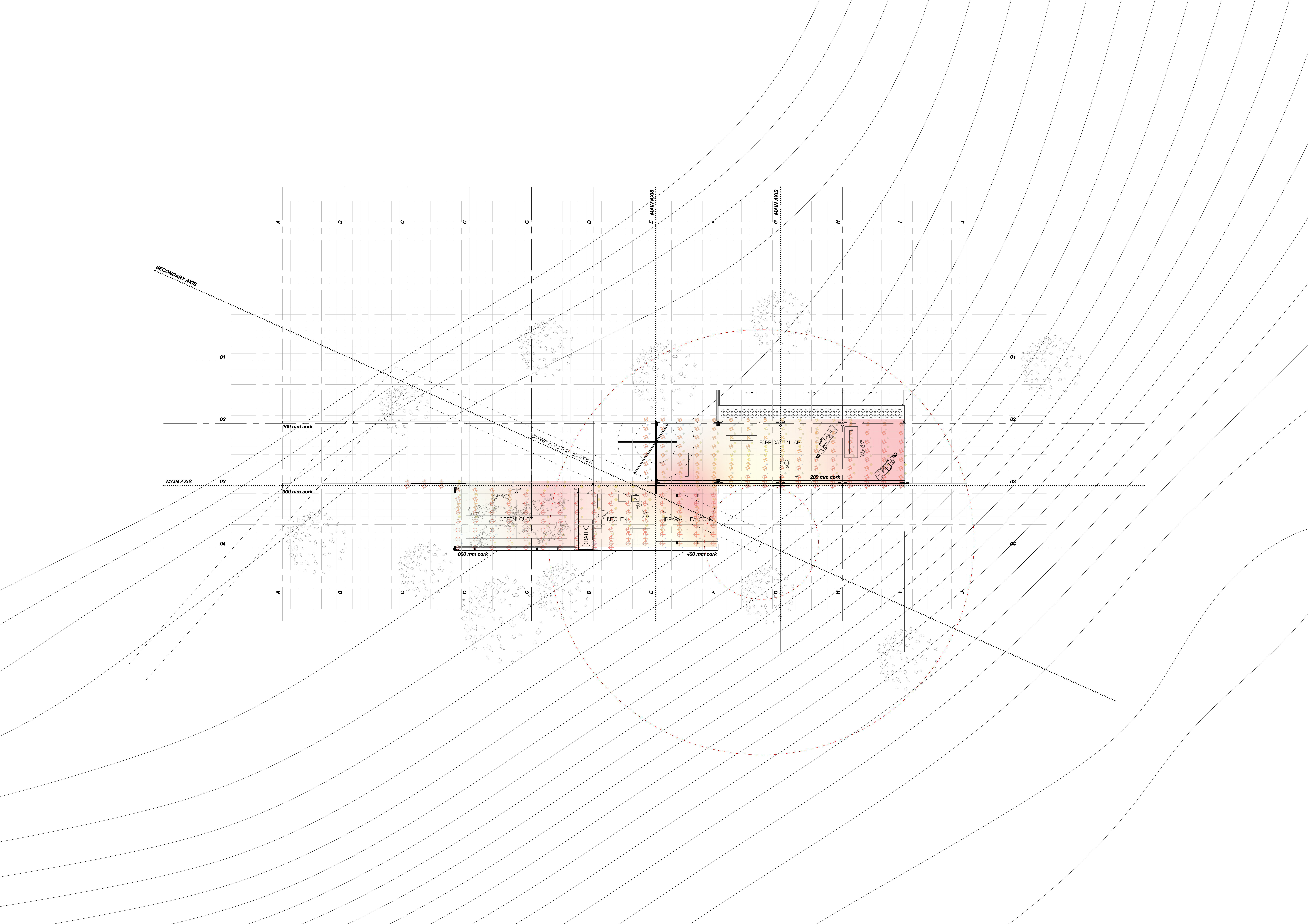
climatic plan of thesis center
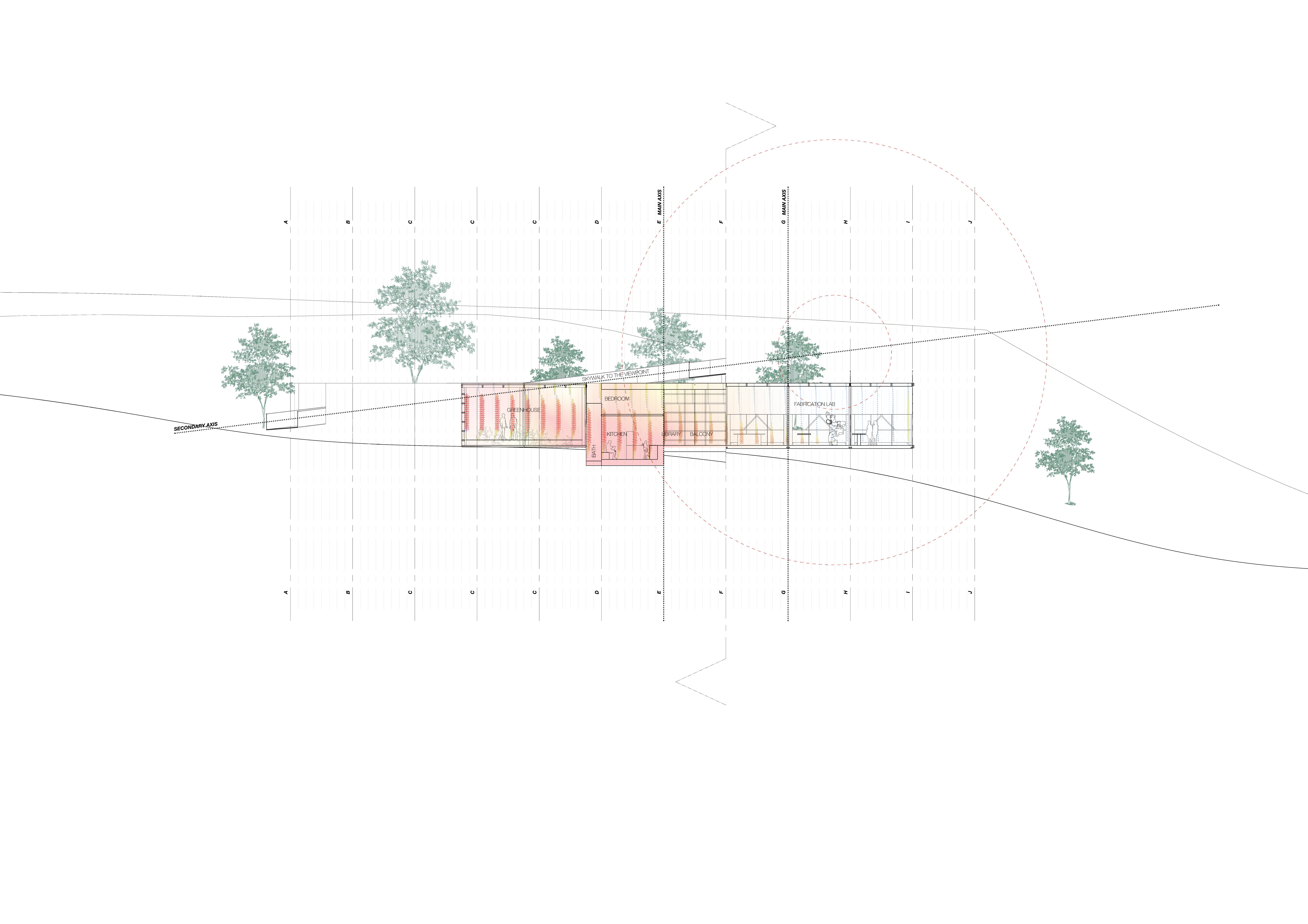
climatic section of thesis center
rendering of extraction site project
TÀN 58
We conducted environmental simulations to better understand the site’s climatic behavior. A wind rose diagram revealed that the strongest and most consistent winds come from the northwest, informing the orientation and partial shielding of the atriums. Solar radiation studies further shaped the building’s massing, ensuring that the atrium walls and adjacent cork units receive maximum winter sun for passive heating.
site plan
The overall structure follows a regular grid system, offering clarity and repetition. In contrast, the cork rooms—designed as mobile, inhabitable elements—introduce a flexible architectural language. Attached to the atriums and mounted on rails, these units can move both horizontally and vertically, allowing residents to reposition themselves over weeks and months in response to shifting seasonal conditions and microclimates
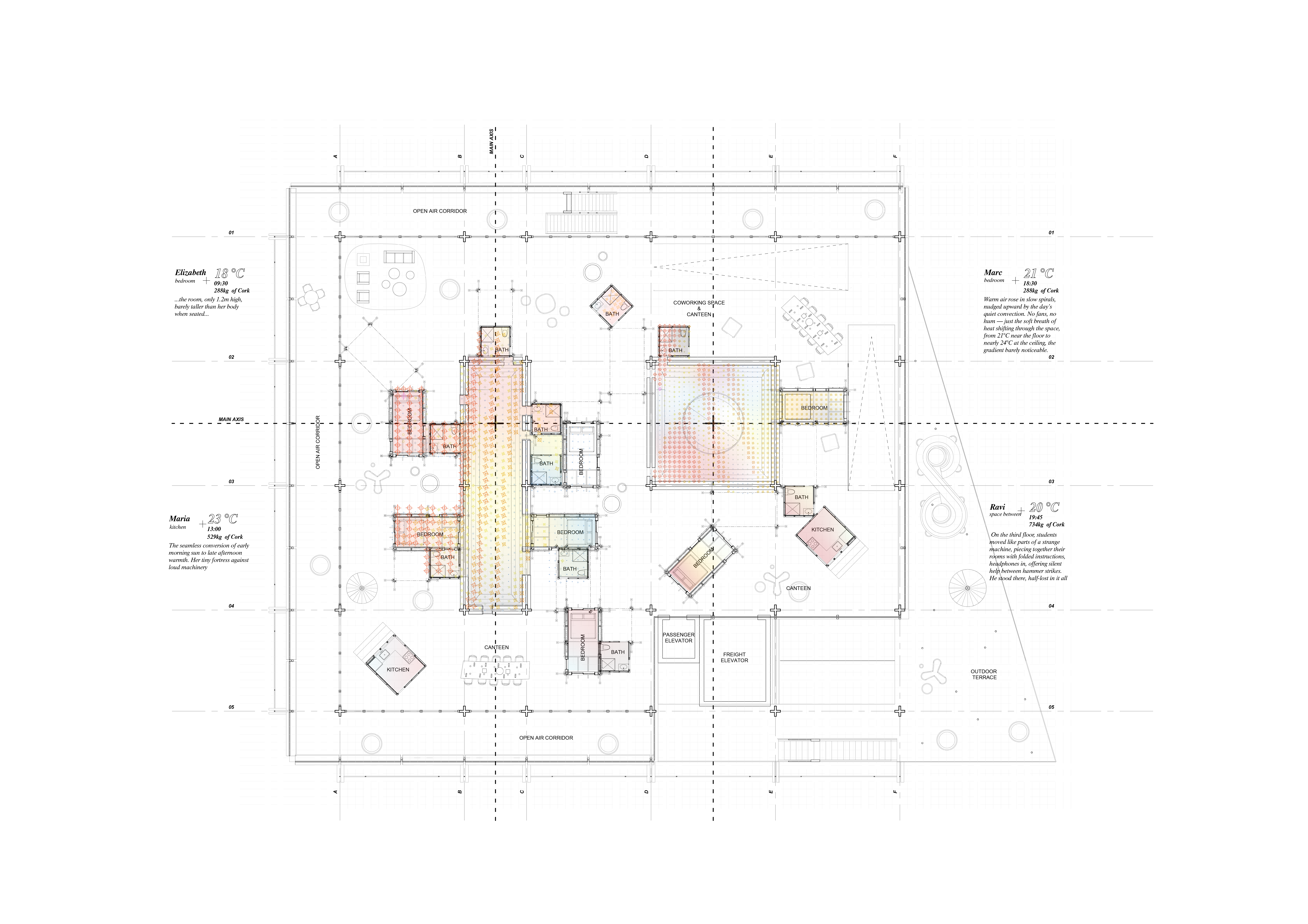
third floor climatic plan
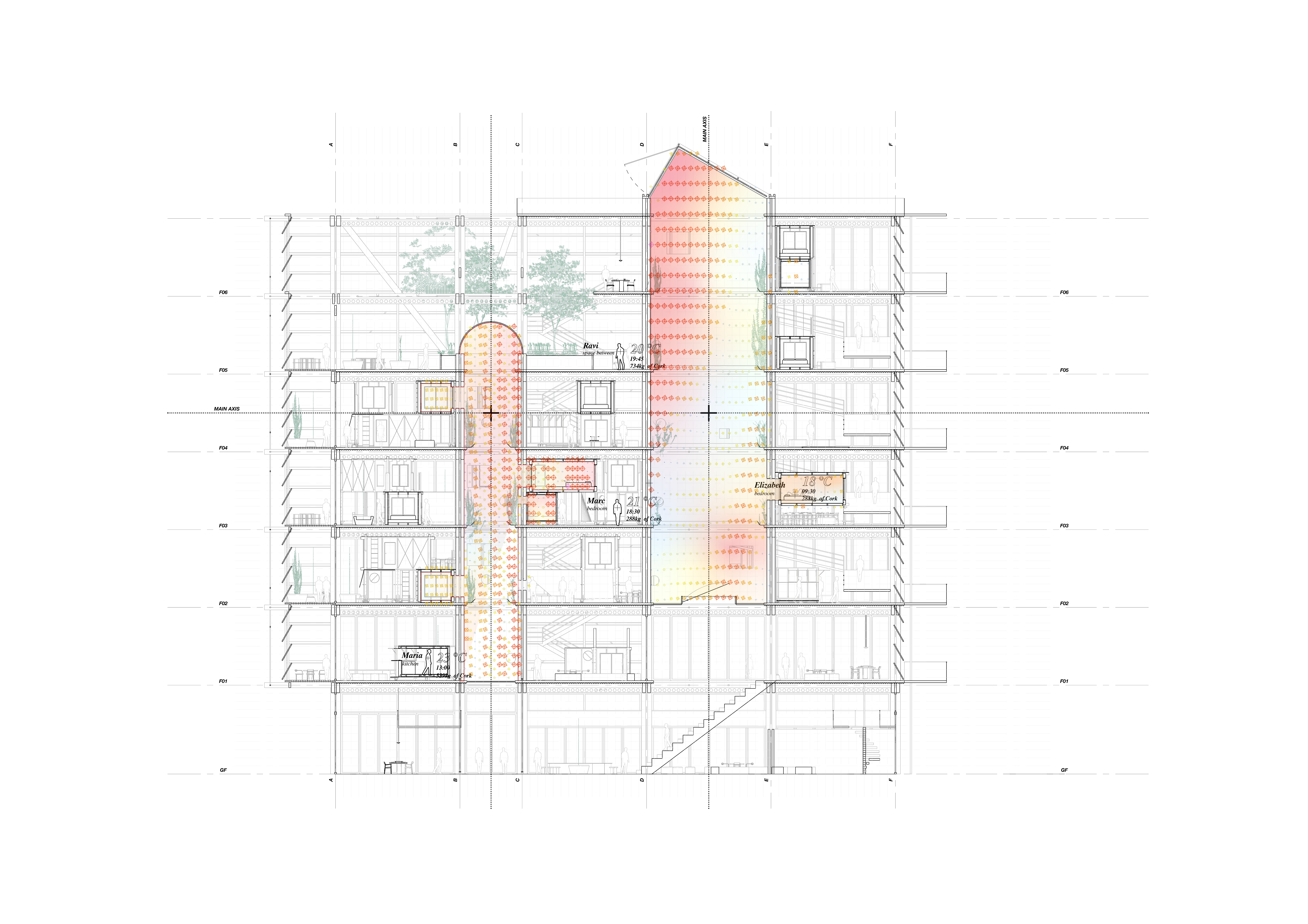
climatic section
Visualizations
1:50 Detail Model
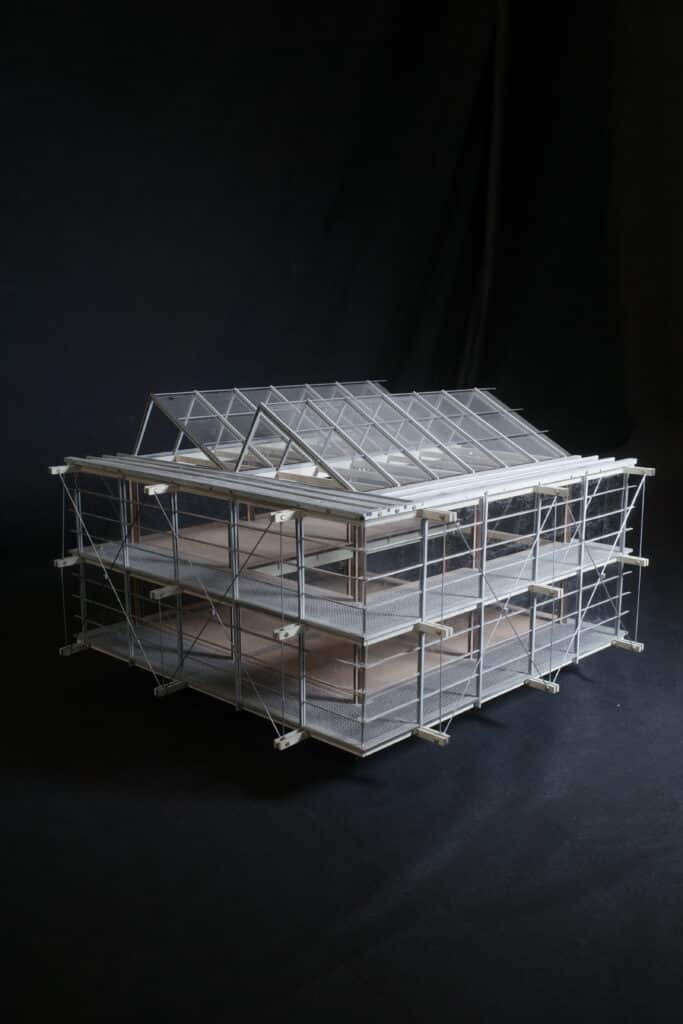

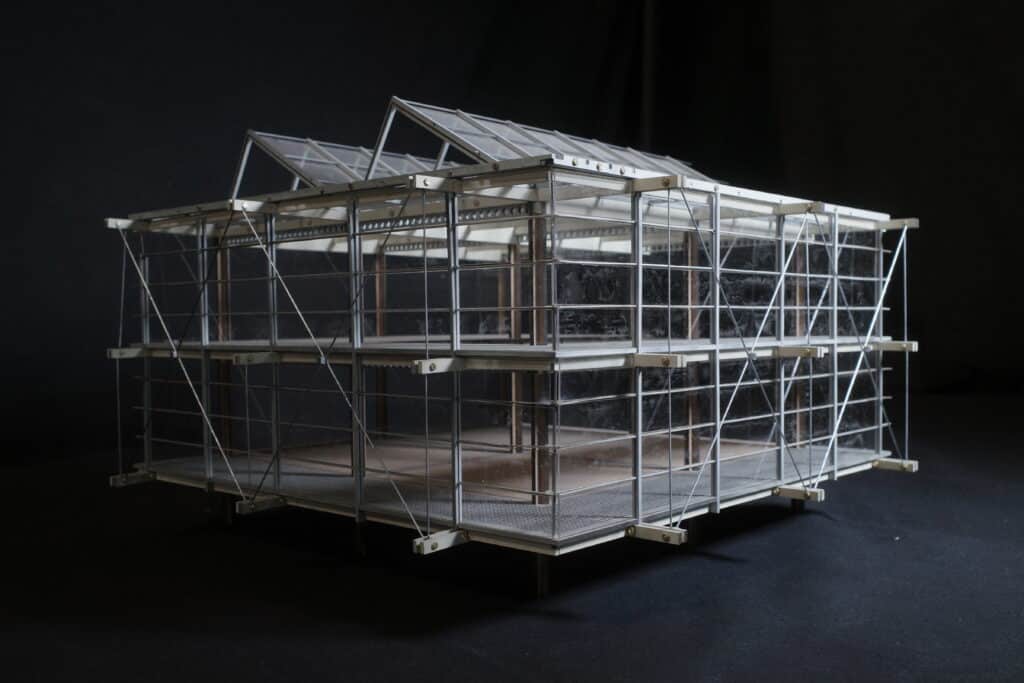
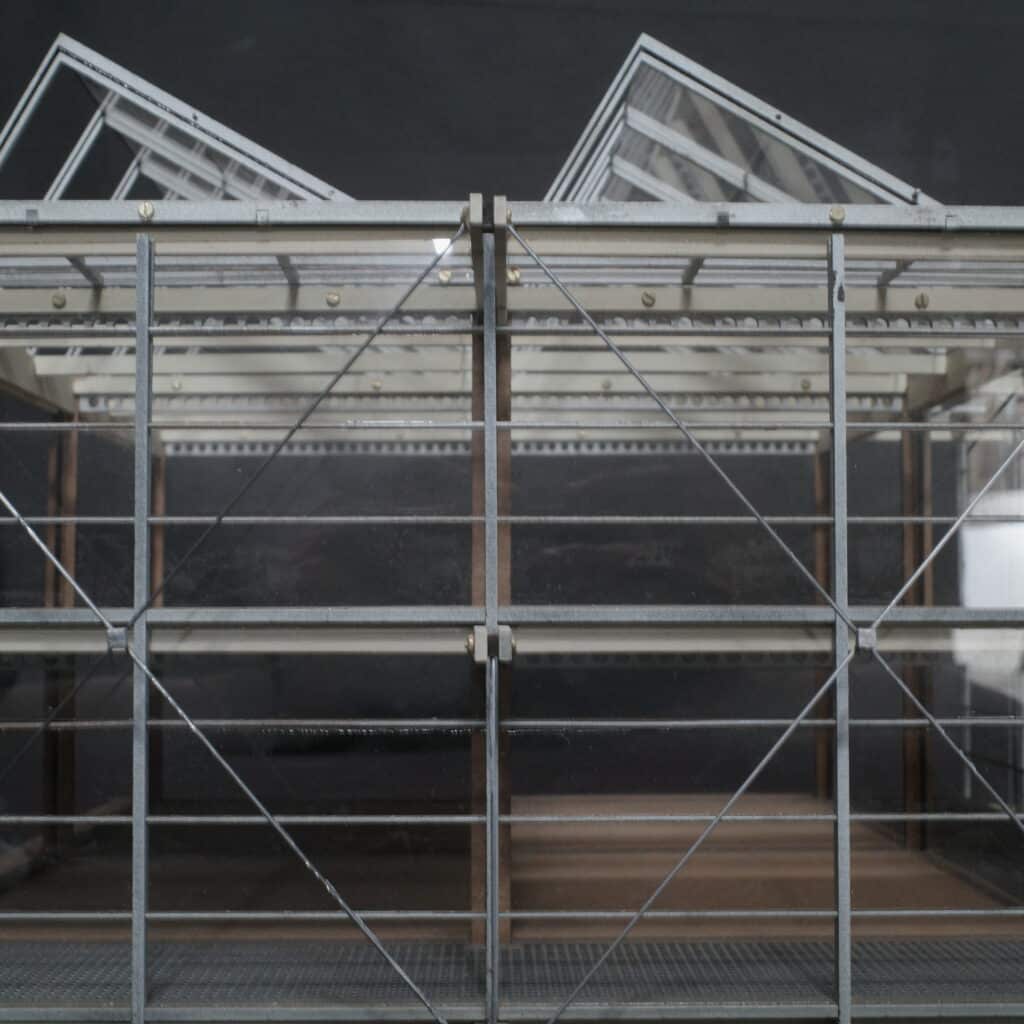
1:50 Model
A central part of the project was a 1:50 physical model built to test and communicate the spatial and climatic logic of TÀN 58. Constructed from MDF, cork, acrylic, metal, and paper, the model allowed us to study the interaction between the structural grid, the cork-lined atriums, and the movable paper room units in real space. It became an essential tool for understanding scale, light, and circulation—revealing how seasonal shifts might play out across the building’s sections and surfaces. The translucency of the acrylic helped simulate daylight penetration, while the paper cork rooms could be repositioned to test their flexibility and thermal logic. More than a representation, the model became an active instrument for design iteration and environmental thinking.
